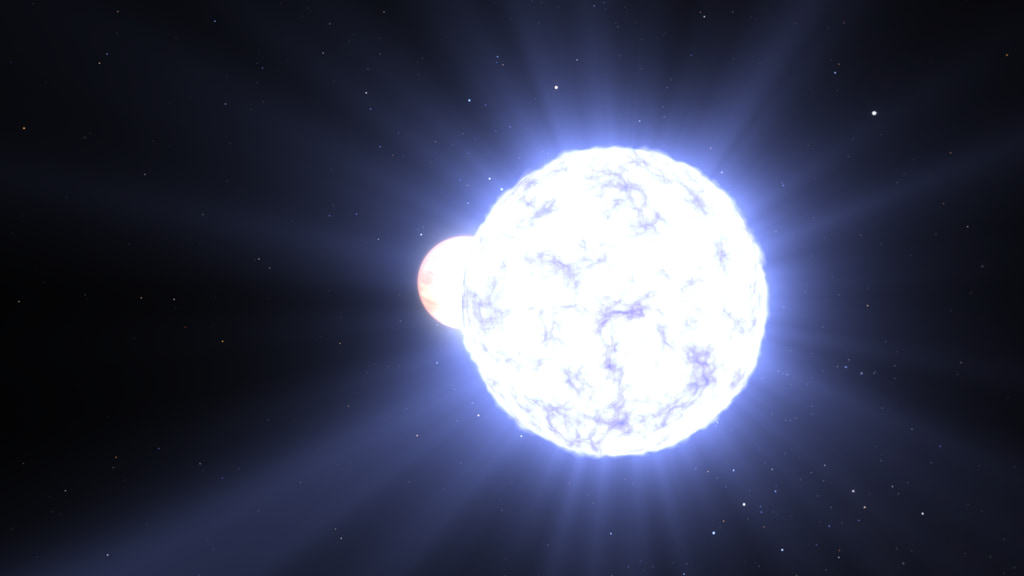Type Ia Supernovae Animations
White Dwarf establishing shot.
Many supernovae occur when massive stars run out of fuel, rapidly collapse under their own weight, and then explode because of strong shock waves that propel out of their interiors. These supernovae occur about once every 50 years in our Milky Way galaxy. But evidence shows that type Ia supernovae originate from some binary star systems that contain at least one white dwarf – the small, hot core remnant of a Sun-like star. Type Ia supernovae are much rarer, happening roughly once every 500 years in the Milky Way.
In some cases, the dwarf may siphon material from its companion. This ultimately triggers a runaway reaction that detonates the thief once it reaches a specific point where it has gained so much mass that it becomes unstable. Astronomers have also found evidence supporting another scenario, involving two white dwarfs that spiral toward each other until they merge. If their combined mass is high enough that it leads to instability, they, too, may produce a type Ia supernova.
These explosions peak at a similar, known intrinsic brightness, making type Ia supernovae so-called standard candles – objects or events that emit a specific amount of light, allowing scientists to find their distance with a straightforward formula. Because of this, astronomers can determine how far away the supernovae are by simply measuring how bright they appear.
Type Ia supernova from accreting white dwarf.
Supernova remnants
Type Ia supernova from merging white dwarfs.
For More Information
Credits
Please give credit for this item to:
NASA's Goddard Space Flight Center Conceptual Image Lab
-
Animator
- Adriana Manrique Gutierrez (USRA)
-
Technical support
- Aaron E. Lepsch (ADNET Systems, Inc.)
-
Producer
- Scott Wiessinger (USRA)
Release date
This page was originally published on Wednesday, May 26, 2021.
This page was last updated on Wednesday, May 3, 2023 at 1:44 PM EDT.
